When it comes to replacing your windows, there are a few important factors to consider. Knowing what to look for will help ensure that your new windows fit in with the aesthetics of your home while providing you with the best possible energy efficiency.
Disclaimer: This article is intended to provide a general overview of the factors you should consider when replacing windows. It is not intended as professional advice and readers are urged to consult with specialists before making any decisions. For a personalized consultation, we recommend seeking the advice of Advance Roofing LLC — we are proudly serving the Spokane, WA area for many years with the highest standard of quality roofing solutions.
What to Consider When Replacing Windows
When it comes to replacing windows, there are several factors to consider, such as the type of window, its frame, the number of panes, and the energy efficiency rating. In this complete guide, we will delve into the various aspects of selecting and replacing windows, from the various types of windows available to the materials used in the frames, and the different coatings and glazing options that influence energy efficiency. We will also discuss some essentials to help you make informed decisions when considering various options for your window replacement project.
Reasons for Replacing Windows
Replacing windows is a major home improvement project, but it’s one that many homeowners need to undertake at some point. The most obvious reason people replace windows is due to damage caused by severe weather, accidents, or simply long-term deterioration. But there are other reasons to consider too.
One of the most important reasons to replace windows is poor energy efficiency. Older windows, or those with single-pane glass, are often quite leaky. They allow air to infiltrate the home, letting the heat escape during the winter and entering the home during the summer. This leads to higher energy bills as your HVAC system works harder to compensate for the heat loss or gain.
Drafts can also be caused by poor weather-stripping, which can be easily damaged or become worn over time. This can lead to small gaps in the frames around the windows, allowing cold air to enter and warm air to escape. This can make your home uncomfortable, and also drive up your energy bills.
Condensation is another issue that can be caused by leaky windows. When warm, moist air comes in contact with the cold glass of your windows, it can cause condensation to
form. This can result in water damage around the window frame. Additionally, it can be a sign that your windows are not well insulated and are losing heat to the outdoors.
Replacing your windows can address all these problems and more. With new, energy efficient windows, you can keep your home comfortable no matter what the weather is like outside. Plus, you can enjoy unobstructed views and natural light that will help reduce your energy bills and create a more inviting indoor space.
In summary, if you notice damage, poor energy efficiency, drafts, condensation, or leaky windows, it’s time to start thinking about replacing your windows. Don’t hesitate to contact a trusted window dealer or manufacturer to explore your options and get a quote for your window replacement project.
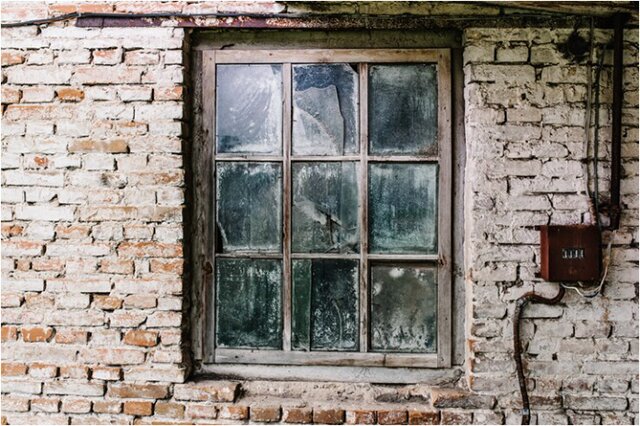
Types of Windows
When choosing replacement windows, one of the most important decisions to make is the type of window that will best suit your needs. The type of window you choose will affect everything from your home’s aesthetic appeal to its energy efficiency. In this guide, we’ll explore the most common types of windows available on the market so that you can choose the best option for your home.
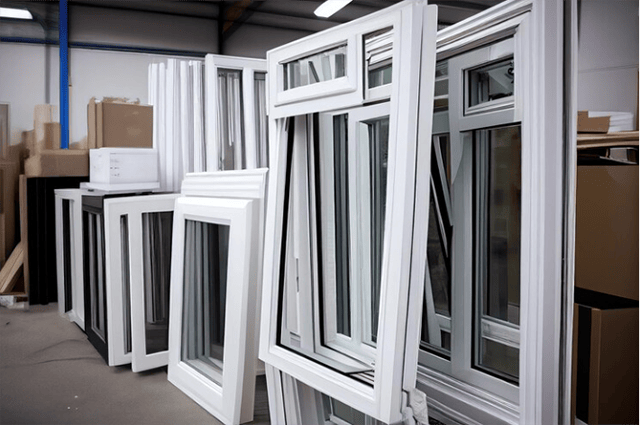
Single-Hung Windows
Single-hung windows are one of the most commonly used types of windows in homes and buildings. They have been around for centuries and continue to be a popular choice due to their classic design and simple, easy-to-use functionality.
A single-hung window consists of a stationary lower sash and a vertically sliding upper sash. The upper sash cannot be removed and is typically designed to allow for the circulation of air between the inside and outside of the room. The lower sash is usually fixed in place and does not move. Instead, it is used to provide structural support for the window and to protect the room from the elements.
Single-hung windows are often compared to double-hung windows, which have two movable sashes that can be opened and closed. While double-hung windows can offer better ventilation due to their two operable sashes, they are also typically more expensive than single-hung windows. Additionally, some people prefer single-hung windows because they are easier to maintain and less likely to break down due to their simpler design.
Despite their simpler design, single-hung windows can still come with a range of additional features and options. For example, some single-hung windows can include a pivoting sash that allows for easier cleaning from the inside of the room. Others may offer low-e coatings on the glass to help reduce the amount of heat that can enter or escape the room.
Single-hung windows can be a great option for a range of different use cases. For example, they may be ideal for rooms that face a patio or outdoor area, as they provide privacy while still allowing natural light to enter the room. Single-hung windows can also be a more affordable option for those on a budget, while still offering high-quality performance and aesthetic appeal.
Ultimately, whether you choose single-hung or double-hung windows will depend on your specific needs, preferences, and budget. However, for those looking for a classic, easy-to use window that still offers a range of features and options, single-hung windows are an excellent choice.
Double-Hung Windows
Double-hung windows are a popular choice for homeowners looking to replace their windows. Unlike single-hung windows, double-hung windows have two operable sashes, which can move up and down independently of one another. This makes them more flexible and convenient to use.
One of the main advantages of double-hung windows is that they provide excellent ventilation. The operable sashes can be adjusted to allow the perfect amount of air to enter the room. This helps to regulate the temperature and improve indoor air quality. Additionally, the two sashes can be opened halfway, which provides a unique configuration that allows for maximum airflow.
Double-hung windows also offer added convenience. Because both sashes are operable, homeowners can easily clean both sides of the window from inside the room. This is especially useful for upper floors, where accessing the outside of the window can be difficult and potentially dangerous.
When compared to single-hung windows, double-hung windows provide more flexibility. The upper and lower sashes can move freely, which allows for more precise control over the airflow and temperature inside the room. This is especially beneficial in warmer climates, where homeowners can adjust the sashes to let in a cool breeze without compromising on security.
To make the most of the ventilation system provided by double-hung windows, it’s recommended to open both sashes at the same time. This creates a natural airflow, where cool air enters from the bottom and warm air exits from the top. Additionally, homeowners can install screens to keep out insects while still allowing fresh air into the room.
Awning Windows
Awning windows are a popular option among homeowners due to their distinctive features and unique benefits. These windows are top-hinged and tilt outwards from the bottom, providing partial ventilation while keeping the interior protected from rain or snow.
One of the main benefits of awning windows is their versatility. They are suitable for almost any type of home and come in a variety of styles and sizes to fit different architectural designs. Additionally, awning windows provide an unobstructed view and reasonable security, as they cannot be easily forced open from the outside.
It’s worth noting that awning and hopper windows are quite similar, with the primary difference being their orientation. While awning windows are top-hinged and tilt outward, hopper windows are bottom-hinged and tilt inward. Hopper windows are typically used in basements or rooms with limited wall space, as they can be easily opened and closed even with furniture or other items nearby.
When selecting awning windows, homeowners may want to consider additional features or styles to best meet their needs. For example, they can choose from a wide range of materials, including vinyl, wood, aluminum or composite windows, depending on their aesthetic preferences and budget.
Moreover, energy efficiency is an increasingly important factor for many homeowners, and awning windows offer numerous options to help save on heating and cooling bills. Low-e coatings can be added to the glass to reduce heat transfer, while a high solar heat gain coefficient can help to keep a home warm during the colder months.
Overall, awning windows are a versatile and energy-efficient choice for any homeowner looking for partial ventilation, unobstructed views and reasonable security.
Casement Windows
Casement windows are a popular option for homeowners who are looking for a modern and fashionable-looking window with clean lines. These windows are hinged at the side and open outward, providing maximum ventilation and great views. Casement windows offer a variety of features and benefits that make them a desirable choice for
homeowners.
One of the most significant benefits of casement windows is their ability to offer maximum ventilation. When opened, they provide a large and unobstructed passageway for air to flow into the room, keeping it fresh and cool. Casement windows can also be an excellent choice for homeowners who want clear and unobstructed views of the outdoors, as the absence of a center stile allows for an open and panoramic view.
Casement windows can be made from various materials such as vinyl, wood, aluminum, or composite windows. Each material brings its own unique advantages, so homeowners can choose the best material that suits their aesthetic preference and budget.
Vinyl casement windows are a great option for those who want a low-maintenance window. They are durable, energy-efficient, and easy to clean. Wooden casement windows, on the other hand, offer a classic and traditional look, but they require more maintenance than vinyl windows. Aluminum casement windows are also energy-efficient, sturdy, and weather-resistant. Composite casement windows combine the best features of different materials to offer an all-around option.
Casement windows come in various types and styles. Some casement windows don’t have a center stile, creating an unobstructed view. They can also be hinged on either the left or right side, depending on the homeowner’s preference. Additionally, they can be paired with fixed windows to add more sunlight without sacrificing ventilation.
In conclusion, casement windows are an excellent choice for homeowners who desire maximum ventilation, clear views, and a modern-looking window with clean lines. With different materials, types, and styles to choose from, homeowners can find the best casement window that fits their needs and budget.
Picture Windows
When it comes to replacing windows, picture windows are a popular option that offer unique benefits. Picture windows are inoperable, meaning they do not open, but they
provide an unobstructed view of the outdoors and ample natural light to brighten up a room.
This type of window is different from other types in that it is designed solely to emphasize a beautiful view and add style and flair to the home. Picture windows come in a variety of shapes and sizes, including rectangular and circle, offering versatility and flexibility in design.
Besides their aesthetic appeal, picture windows can be a great way to showcase an exterior view, such as a scenic landscape or a beautiful garden, like a work of art. They offer unobstructed views of the outside and let in a significant amount of natural light, which can help create a bright and welcoming living space.
Overall, if you’re looking to replace your windows and want to add a touch of style, elegance, and natural light to your home, picture windows may be a desirable option to consider. Their unique features and benefits make them a versatile and practical choice for any homeowner looking to spruce up their living space.
Window Materials
Windows play a significant role in the overall look and energy efficiency of a home. When it’s time to replace them, choosing the right window materials can make a significant impact. But with so many options available, it can be overwhelming to know where to start. In this guide, we’ll break down the different materials for replacement windows and what to consider when making your decision.
Vinyl Windows
Vinyl windows have become one of the most popular and practical options for homeowners when it comes to window replacement. These windows bring in an array of notable features and benefits.
One of the most significant advantages of vinyl windows is their durability. They can last up to 20 to 40 years, making them a long-term investment.
Moreover, they require very minimal maintenance, making them a hassle free option for homeowners. Vinyl windows do not require painting or staining, removing the need for a lot of upkeep.
Additionally, vinyl windows are an energy-efficient option for homeowners. They seal tightly and prevent heat loss or gain, reducing energy bills and making the home more comfortable.
With low-e coatings, vinyl windows can also prevent the sun’s UV rays from entering the home, which helps protect furniture and flooring from fading.
Vinyl windows come in various color options, and they can match any home style or theme. Homeowners can choose between different finishes, such as wood grain, to match their home’s aesthetic appeal.
Another reason why homeowners love vinyl windows is that they are cost-effective. They are an affordable option compared to wood or fiberglass windows, and their durability and energy efficiency save homeowners money in the long run.
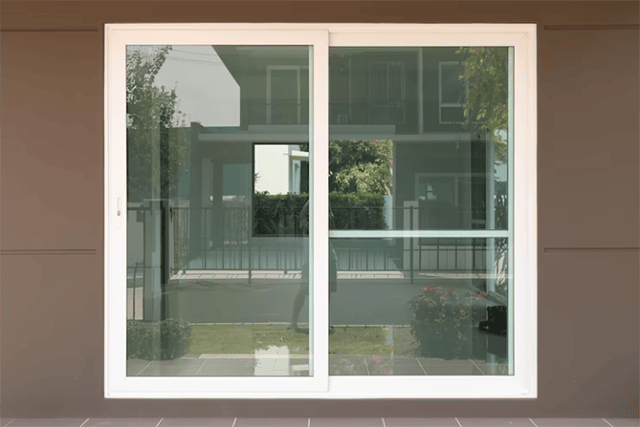
Aluminum Windows
When it comes to replacing windows, aluminum frames are a popular option that offers several advantages. One of the standout features of aluminum windows is their slim design. Unlike wooden frames, they have a sleek and contemporary appearance that can add a modern touch to any home. Additionally, aluminum frames are incredibly lightweight, making them easy to install and offering flexibility in design.
One of the biggest advantages of aluminum windows is their cost-effectiveness when compared to wooden frames. They are an affordable option that offers durability and longevity, making them an excellent choice for homeowners who want to make a long term investment in their home. However, it is important to note that aluminum frames can pose certain challenges in regards to weather changes and expansion.
Despite this challenge, recent advancements in technology have led to the addition of thermal breaks, making aluminum windows more energy-efficient and better suited for all weather conditions. These thermal breaks act as a barrier between the cold outside air and the warm inside air, which helps to reduce heat loss or gain, making them more energy-efficient than older versions.
In terms of maintenance, aluminum windows are easy to paint, making them an excellent option for homeowners who want to personalize their windows to match their home’s aesthetic. Additionally, they are resistant to cracking, peeling, and warping, meaning they require minimal upkeep compared to other materials.
Like any window frame, aluminum windows have their pros and cons. Their lightweight, cost-effectiveness, and modern appearance make them a popular choice for homeowners; however, they may not be the best option for regions with extreme temperature changes. Nevertheless, they remain a great choice for modern housings, especially for homeowners who want a sleek appearance in their home.
In conclusion, aluminum windows have several features that make them a suitable option for homeowners. They offer a sleek and contemporary appearance, are lightweight, cost effective, and easy to maintain. With recent advancements in thermal break technology, aluminum frames are more energy-efficient and better suited for all weather conditions. For those looking to replace their windows, aluminum frames might just be the perfect solution.
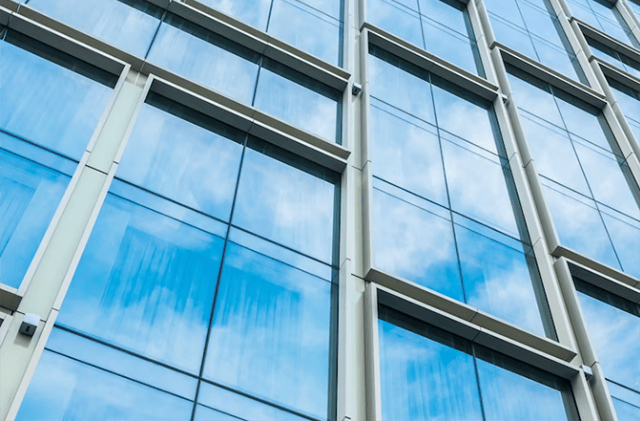
Wood Windows
Wood windows have a classic and versatile appeal that can enhance the aesthetic of any home. Their natural look and warmth can elevate the design of both contemporary and traditional houses. However, some homeowners may be deterred by the perceived maintenance that wood windows require.
Despite this concern, wood is a durable and long-lasting material that surpasses other options in terms of insulation. Properly maintained wood windows can provide excellent
insulation and help decrease energy bills by blocking out heat loss and gain. For those who value sustainability, wood is a renewable material and can come from sustainable sources.
That being said, there are options for homeowners who desire the look of wood but worry about its maintenance. Clad wood windows are a good alternative as they consist of a wood interior and a protective exterior made of either vinyl or aluminum. This means that the wood is sheltered from harsh weather conditions and requires minimal maintenance.
Architectural styles that pair well with wood windows include traditional styles like Colonial, Cape Cod and Tudor homes, as well as contemporary houses with a focus on natural materials. When choosing wood windows, it’s important to consider the architectural style of your home to ensure that the windows complement it.
In summary, while wood windows may require some maintenance, they offer great insulation and a classic appeal. For those wanting the look of wood without the upkeep, clad wood windows are a great option. Sustainability, insulation, maintenance, clad wood windows, and architectural style are all important factors to consider when selecting wood windows for your home.
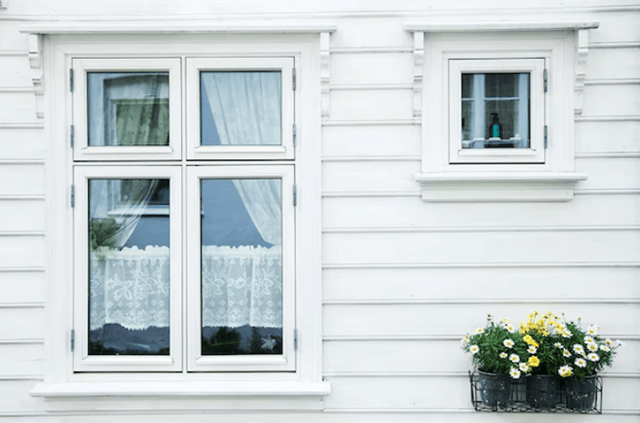
Composite/Fiberglass Windows
If you’re in the market for new windows, you may be wondering about composite and fiberglass options. Composite windows are made up of a blend of materials, typically including wood fibers and PVC or other plastics. Fiberglass windows, on the other hand, are made entirely of fiberglass reinforced with plastic.
One of the primary benefits of both composite and fiberglass windows is their resistance to moisture damage. Unlike wood windows, which can rot or warp when exposed to moisture, composite and fiberglass windows hold up well in wet conditions. Additionally, both materials offer excellent thermal performance, helping to keep your home cool in the summer and warm in the winter.
However, it’s worth noting that composite windows are typically more expensive than vinyl or aluminum options. This is because they are a relatively new product on the market and are still gaining popularity.
Despite the higher cost, fiberglass windows have become increasingly popular among architects, builders, and homeowners in recent years. This is especially true in regions that encounter extreme temperatures. Fiberglass has a low thermal expansion rate, which means it doesn’t expand or contract as much as other materials in response to temperature changes. This makes fiberglass windows an excellent choice for areas with hot summers and cold winters.
In summary, composite and fiberglass windows are both great options for those looking for a durable and moisture-resistant window with great thermal performance. While composite windows are more expensive than some other options, fiberglass windows are gaining popularity thanks to their unique properties and performance in extreme temperatures.
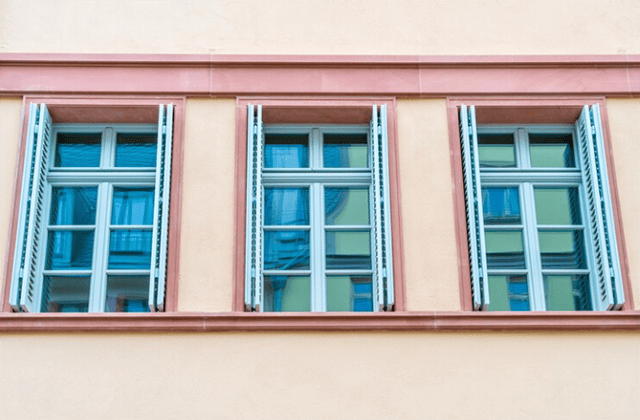
Energy Efficiency Considerations
When it comes to replacing windows, one of the most important factors to consider is energy efficiency. Not only can energy-efficient windows help to reduce your carbon footprint, but they can also have a significant impact on your energy bills over time.
There are two key measures to consider when comparing the energy efficiency of different windows: heat transfer and solar heat gain coefficient. Heat transfer refers to the ability of the window to prevent heat from escaping your home during the winter and to stop heat from coming in during the summer. Solar heat gain coefficient, on the other hand, refers to the ability of the window to allow natural light in while blocking unwanted solar heat from entering your home.
Choosing the right glazing and frame materials is also key to ensuring energy efficiency. Double-pane or triple-pane windows with Low-E coatings, for example, are particularly effective at reducing heat transfer and, as a result, can significantly decrease your energy bills. Frame materials such as vinyl, fiberglass, and composite materials are also highly energy-efficient.
The type of window and its location in the house can also play a role in energy conservation. South-facing windows, for instance, are great for natural light, but can also contribute to heat gain during the summer months. Therefore, it is important to consider which windows face which direction when making your selection.
Finally, other factors such as weather-stripping and Low-E coatings can also impact energy efficiency. Weather-stripping helps to seal gaps between the window and its frame and can lead to significant energy savings. Low-E coatings, meanwhile, help to minimize the amount of heat that passes through the glass while still allowing natural light in.
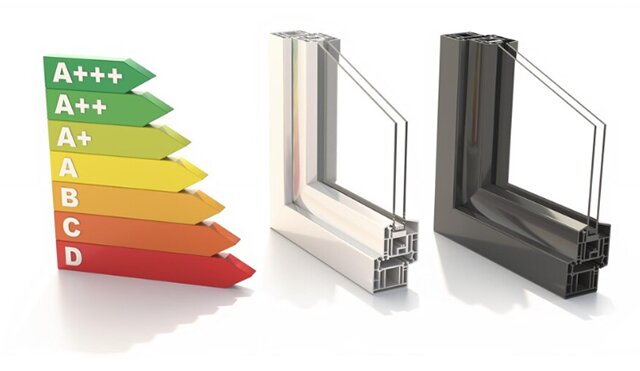
Other Features to Consider in a Window Replacement Project
When considering a window replacement project, there are several additional features to keep in mind beyond just energy efficiency. One important factor is the number of panes of glass within the window. Double-pane windows are more energy-efficient than single pane windows due to the added insulation, but triple-pane windows offer even more insulation and can further reduce energy bills.
Another feature to consider is the use of low-e (low-emissivity) coatings on the glass. Low-e coatings help to reflect heat back into the home during the winter months, while also blocking UV rays that can fade furniture and carpets. This can also help with energy efficiency since the window is able to retain more heat during colder months, but let in less heat during warmer months.
Natural light is another important factor to consider when replacing windows. Certain window styles such as picture or operable windows can allow for more natural light to enter a room, while others such as awning or hopper windows may provide less natural light but offer greater ventilation.
The architectural style of the window is also an important consideration. The window design should complement the overall style of the house, whether it is modern, traditional, or somewhere in between. Window frames can be made from a variety of materials including wood, vinyl, aluminum, fiberglass, and composite materials, with each material offering unique benefits in terms of durability, energy efficiency, and aesthetic appeal.
When considering replacement windows, it is also important to look at the features offered by different window manufacturers. Some manufacturers may specialize in certain materials or styles, while others may offer unique features such as built-in blinds or customizable grid patterns. It’s important to prioritize which features are most important to you while also keeping in mind the budget for your window replacement project.
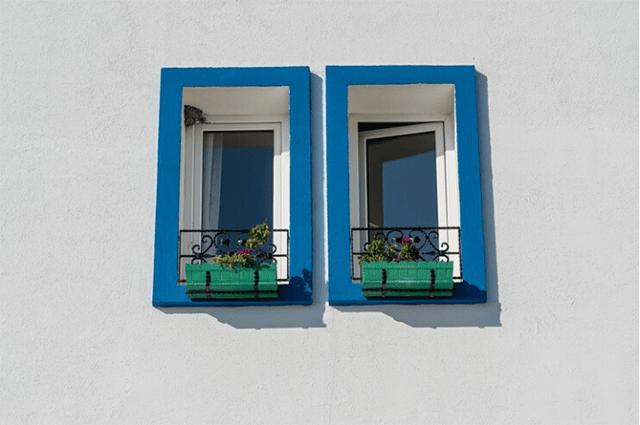
Conclusion
In conclusion, when replacing windows in a home, there are many factors to consider beyond just energy efficiency. It is important to consider the number of panes of glass, low-e coatings, natural light, architectural style, and features offered from different window manufacturers in order to find the best windows for your needs. By taking all of these factors into consideration before making a decision on which windows to install, you can be assured that you have chosen the most energy-efficient and aesthetically pleasing replacement windows for your home.



 509-201-4190
509-201-4190
